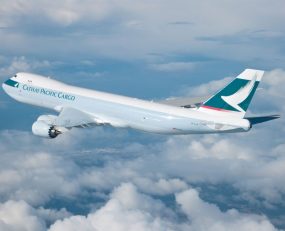
The market for air transport in Asia Pacific is changing. Once dominant Singapore Airlines and Cathay Pacific are suffering from competition both from new entrants but also from the effects of market changes.
Singapore Airlines (SIA) announced that its full year profits had taken a sharp downturn by SG$99m to SG$386m. This performance has forced what its CEO has described as “bold actions” to fundamentally review the airlines “network, products and deployment of aircraft”. The company has already embarked on a job reduction programme at the beginning of the year and now it has started to restructure the company. For example, Singapore Airlines has said that it would reabsorb its previously independent air cargo business back into SIA due to “structural changes to the air freight market”, although it also said it would retain its freighter fleet and expected overall freight capacity to increase as the airline bought new aircraft. Over 2016-2017, the cargo business made SG$3m in contrast to the SG$50m loss in the previous financial year.
Cathay Pacific also is having to restructure fiercely. On Monday (22 May, 2017) the Hong Kong-based airline said that it would make 600 posts redundant, including a quarter of its management at its corporate headquarters. It has also restructured its cargo business and scrapped the position of director of cargo. In 2016 Cathay Pacific saw a loss of HK$575m despite passenger volumes increasing modestly.
The problems that both airlines face is that although demand for passengers and cargo remains reasonable across the Pacific, South Asia and the Middle East, the competitive environment is changing fast. Not only do the Gulf carriers have an expanded presence, but Chinese airlines have also invested in large new fleets and are seeking to undercut incumbents on price. In addition, the region is seeing a trend to low cost budget carriers, with South East Asia being a particular hot spot in this market segment. Much of this, as Singapore Airlines pointed out, is underpinned by cheap oil prices as well as State backed financing. This may in the future make the supply side in the region unstable, but for now it fuels savage competition.
Source: Transport Intelligence, May 25, 2017
Author: Thomas Cullen